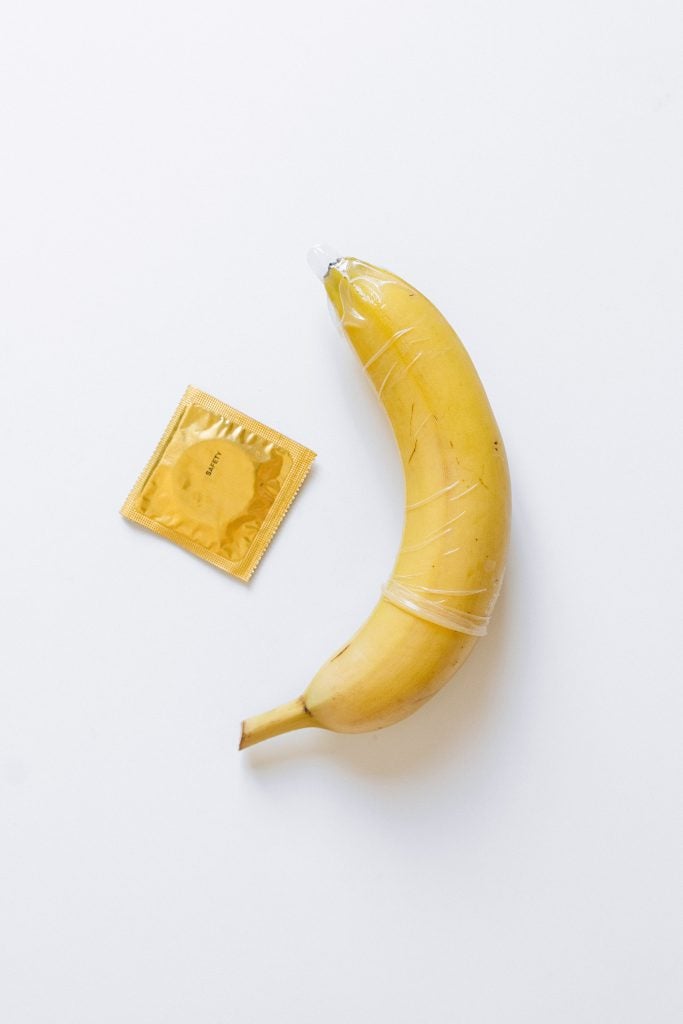Syphilis is a sexually transmitted disease that can damage the heart, brain, eyes and bones and can even cause death if left untreated. If caught early, syphilis may be cured with antibiotics. A single dose of penicillin is usually an effective treatment for early-stage syphilis, and three doses of penicillin is usually effective for late-stage syphilis.1 To learn more about syphilis and the stages of its progression, click here.
Syphilis was one of the world’s first identified sexually transmitted infections (STIs). While scientists are still unsure of exactly where the bacterium that causes syphilis first appeared, there are two main hypotheses about its origin.
Table of Contents
The Epidemic
In 1495, an epidemic of the disease broke out among the soldiers of Charles VIII of France. An army of 50,000 soldiers and their cooks, medical attendants, and prostitutes marched from France to Naples, Italy to initiate a takeover. Shortly after occupying Naples, it became evident that many of the soldiers were afflicted by a horrible disease. Many became so ill that they were too weak to fight.2 This disease–syphilis–left painful sores along the body, which developed into large boils that would soon pop. The afflicted also experienced joint pain, rotting flesh, and scabbing.3 During its final phase, abscesses and ulcers appeared, and oftentimes, the body was disfigured or the person was faced with debility or madness. At this stage, the afflicted were frequently shunned since the symptoms were obvious and visible and often seen as an outward sign of sin.4
Evidence from scholars at the time suggests that initially the symptoms of the disease were more severe and led more rapidly to death than compared to now. In 1495, syphilis often resulted in death within months of infection. By the mid-1500s, the progression of the disease was much slower and more similar to its rate in the present. Currently, each of the four stages of syphilis can last for years before moving on to the next more severe stage. The present slower progression of the disease may be due to resistance that the human population has built up over time. Since Charles VIII’s soldiers were among the first Europeans to be exposed to the disease, they may have experienced more devastating effects.2
Upon the soldiers’ return from Naples, the epidemic spread quickly throughout their homelands. By the end of 1495, syphilis had spread into France, Switzerland, and Germany. By 1497, it had also reached England and Scotland. It continued to spread across Europe, and as a result of world exploration, was introduced to continents like Africa and Asia.2 By the 20th century, it was estimated that 10 percent of London residents, 40 percent of Parisians, and 20 percent of U.S. army recruits had the disease.3
How Did it Originate?

The Columbian Theory
One theory for the appearance of syphilis asserts that the disease was brought from America to Europe by the crews of Christopher Columbus and other explorers. Syphilis and its related diseases can leave distinct marks on bones, which has allowed researchers to examine fossils of past generations for signs of infection. At pre-Columbian sites in America, the researchers found a high rate of syphilis-related markings on the bones of young individuals. This may be evidence that syphilis originated from a non-sexually transmitted disease, like bejel or yaws. Once the disease was brought to Europe by explorers, the bacterium may have evolved to a new Treponema pallidum subspecies that created a European epidemic.5
Bejel and yaws are highly contagious infections that can be transmitted through nonsexual contact (like sharing eating utensils).6 Yaws is usually found in tropical regions of the world, while bejel is more often found in arid regions like the Middle East.2 Like syphilis, bejel and yaws cause tissue inflammation and bone disfiguration. Bejel begins as a mouth sore, and then after a period of several months to years without symptoms, goes on to affect the skin and bones. During this stage, it can cause bone disfiguration and deformation of the face. Yaws begins as a slightly raised sore, usually found on the legs. After the initial sore heals, more sores may develop and burst open. Disfiguring growths along the nose and mouth may also occur. Bejel and yaws can also be quickly treated with a single injection of penicillin.6
Since Columbus’s explorers returned back to Europe in 1492 and the first recorded epidemic of syphilis occurred only a few years later during the French invasion of Naples, Italy, this provides support for the Columbian theory.
The Variable Symptoms Theory
A second theory argues that syphilis already existed in Europe before Columbus and his explorers returned from America. Since the T. pallidum bacterium that causes syphilis has many different symptoms, doctors may not have realized that these symptoms were all related to the same disease. Syphilis exists in four stages, and symptoms can range from sores and skin rashes to blindness, paralysis, and dementia. Symptoms of late-stage syphilis can even appear 30 years after symptoms of early-stage syphilis have disappeared.5 Though the disease may have been present in Europe much earlier than it was discovered, it may not have been recognized as a single affliction until year 1500 due to its highly variable symptoms.7
Prior to its formal recognition in 1500, syphilis seems to have been recorded in historical texts. However, none of these references are clear enough that scholars today can be certain that the physicians were in fact dealing with syphilis. For instance, texts reference successfully treating leprosy with mercury, but mercury was only effective in diminishing symptoms of syphilis, not leprosy. There are also references to venereal leprosy, or leprosy transmitted through sexual contact. Since leprosy cannot be sexually transmitted, this may also provide early evidence of syphilis. Proponents of this theory believe that when the first clear descriptions of syphilis arose in 1500, it was due to advancements in medical knowledge that allowed doctors to finally differentiate syphilis from other ailments.7
Which Theory is Correct?
While the debate over the origin of syphilis continues, contemporary research appears to most strongly support the Columbus theory. Recall the reports of skeletons from Europe dating back to before Columbus’s journey to the Americas whose bones provided evidence of chronic syphilis.7 Syphilis, bejel, and yaws (collectively known as the trepomenal diseases) can leave bone lesions at the site of infection, which can be detected by studying the skeletal remains. However, other diseases can also leave similar marks. In order to ensure that these lesions are caused by one of the treponemal diseases, scientists look for craters on the exterior of the skull and sites on the shinbones that are both swollen with new growth and have cavities.2 Upon analysis of the European skeletons dated back to pre-1492, scientists found that these distinctive markings of chronic syphilis were absent.7
Upon analysis of skeletons from the United States and Ecuador that dated back to before contact with European explorers, scientists found evidence of treponemal infection. Scientists believe the disease was not transmitted sexually because many of the afflicted skeletons were juveniles. However, debates continued until scientists could determine whether the infections that cause syphilis, yaws, and bejel were related or genetically different. After examining the phylogeny of the genomic strands, it was found that venereal syphilis is most closely related to non-sexually transmitted yaws strains from South America.2 This shows that syphilis, or perhaps its progenitor, was brought from America and then distributed worldwide with the explorers’ return to Europe.4
Scholar Records of Syphilis
In 1496, Sebastian Brandt wrote a poem about syphilis and its spread across Europe. Then, in 1514, Johannis de Vigo described the disease and wrote about how it seemed to be transmitted through sexual intercourse. He described the stages of syphilis–the primary chancre that develops into a skin rash, boils, and joint pains.2 Before it was formally termed “syphilis,” the disease held many other names. Many of these names tried to blame the disease on specfic regions; thus it was refered to as the Venetian, Naples, or Turk disease.7 By displacing blame onto other regions, each nation hoped to dissociate itself from the stigma of the disease.5 Syphilis was also commonly referred to as “the pox.”4
Finally, in 1530, the disease got the name “syphilis” from the Latin poem Syphilus, sive morbus gallicus, “Syphilus, or the French disease,” by Italian physician and poet Girolamo Fracastoro. The poem is about a Greek shepherd, Syphilus, who leads a revolt against the Sun-God, blaming the god for a drought. As punishment, Syphilus and his people are afflicted with a disease. After this poem was written, some scholars began to use the name syphilis to describe the disease. However, it was not until the early nineteenth century that the general public began to refer to the disease with this name.4
Attempts at Eradication
During the 1520s, it became clear to physicians that syphilis was transmitted through sexual contact. Restrictions were placed on brothels and bathhouses in attempts to prevent the spread of syphilis through prostitution.4 However, the origin for the disease remained unknown. Theories included a new astrological alignment of the planets, punishment from God for sin, and a plague brought from the New World.

Sexually transmitted infections (STIs), like syphilis, posed a threat to soldiers in war. During World War I, STIs were the second most common reason for discharge from active duty. Syphilis and other STIs severely impacted soldiers around the world, so propaganda posters were created to increase awareness about STI transmission and prevention. Syphilis was first introduced as a public health issue in the Works Progress Association’s (WPA) Federal Art Project during the Great Depression. These posters were released during WWII and aimed to educate soldiers on the hazards of unprotected sex and the dangers of STIs.8
Early Remedies
In many ways, the early remedies for syphilis were said to be worse than the disease itself. Guaiacum, or “holy wood”, was used to treat syphilis. The wood was used as a hot drink followed by a sweat bath. Sweat baths were used to induce salivation and perspiration in hopes that it would eliminate syphilis from the body. However, neither of these methods were very effective.4 Mercury was also used to treat syphilis, but its administration often resulted in extreme pain and sometimes even death by mercury poisoning.2 Mercury was used in many different ways, including use as an oral medication, a topical ointment, and a suffumigation, in which the fumes are inhaled. However, the efficacy of mercury was controversial, especially with the intense discomfort and sometimes death caused by treatment. Various other metals were experimented with, but none proved to be an effective means to the eradication of syphilis.4
In 1905, German scientists Fritz Schaudin and Erich Hoffman identified the bacterium, Treponema pallidum, that is responsible for syphilis. T. pallidum is a spiral-shaped bacterium that can be transmitted through mucous membranes or moist abrasions in the skin during sexual contact. It can also be transmitted from mother to fetus during pregnancy.9 One year later, the Wassermann test was developed as an effective means of testing for syphilis.10 This test could detect syphilis before acute symptoms developed, thus helping prevent the transmission of syphilis to others.
After isolating the bacteria, scientists could begin developing more successful ways of treating the disease. Anti-microbial arsenic compounds, like Salvarsan and Neo-salvarsan, were used during World War I to treat soldiers who contracted syphilis. However, while it seemed to effectively treat syphils, it required numerous injections over a long period of time and produced many toxic side effects.4

Penicillin, the most efffective treatment for syphilis, became widely available in 1943 after the anti-bacterial properties of the mold were first discovered in 1928. Following this breakthrough, penicillin was mass-produced for use as medicine, and it was soon found that this antibiotic was an effective treatment for syphilis.10 Penicillin can eradicate syphilis in its primary and secondary stages, and it has few side effects compared to treatments that involved mercury or arsenic.4 With the mass production and use of penicillin, the number of cases of syphilis dropped dramatically. Penicillin is still used today to treat syphilis. Tetracycline, erythromycin, and ceftraixone can be used as alternative treatments for patients allergic to penicillin.1
The Tuskegee Institute
The “Tuskegee Study of Untreated Syphilis in the Negro Male” began in 1932 in Tuskegee, Alabama.11 It was initiated by the United States Public Health Service and the Tuskegee Institute.12 When the study first began, penicillin had yet to be discovered as an effective treatment for syphilis.11 The researchers sought to monitor the effects of untreated syphilis.12 However, the participants were never told that they had syphilis nor that they were part of a study. Instead, they were told that they would receive free health care for treatment of “bad blood.” “Bad blood” was a local term used to describe conditions such as anemia, fatigue, and syphilis. They were also to receive medical exams, rides to and from the clinics, meals, free medical treatment, and burial stipends once they died.11
There were a total of 600 men in the study, most of whom were poor and illiterate. Of the men, 399 had latent syphilis and 201 were control subjects who did not have the disease.11 The latent stage of syphilis occurs after the secondary stage (skin rash). The latent period can last for years, and during it, no symptoms are present. Following the latent period, signs of the disease may never return. However, the disease can also progress to the tertiary stage. During the tertiary stage, damage may occur on various areas of the body–including the brain, eyes, and bones.13
During the Tuskegee experiment, the male participants were delibrately left without treatment so that the researchers could monitor the natural progression of the disease. The experiment went on for 40 years, during which time penicillin was found to be a cure for the disease. Even after this discovery, the participants were not treated or informed that they could seek penicillin treatment elsewhere.11
The experiment ended in 1972, after the Associated Press released a story that uncovered the researchers’ lack of study ethics. By this time, at least 28 and perhaps as many as 100 men had died due to complications caused by syphilis.12 The case was reviewed by an advisory panel, of which its members agreed that though the participants had agreed to be a part of the study, they had never given true informed consent because they not provided with all of the important details regarding their participation in the study. In this way, researchers showed no regard for the health of their participants and the males were never informed of the potential consequences of being withheld from adequate treatment for their disease.11
One month after the advisory panel’s decision was released, the Tuskegee Study officially ended.12 By December 1974, the government had agreed to pay an out-of-court settlement of over $9 million to the study participants. It also entitled all living participants to free medical and burial services.11 On May 16, 1997, President Clinton gave a formal apology to the surviving participants of the study on behalf of the United States government.12
Syphilis Now

In 2013, health officials reported over 50,000 cases of syphilis in the United States. This figure included approximately 17,000 cases of primary and secondary stage syphilis–75% of which were found among men who have sex with men. Often, it is hard to recognize the sores caused by syphilis, making it easy for a person unaware of their infection to transmit it to others. Syphilis poses an additional risk because the genital sores caused by the disease make it easier to transmit human immunodeficiency virus (HIV). Because of this, it is important to consistently get tested for sexually transmitted infections and to use a latex or polyurethane condom during every sexual encounter to decrease the risk of transmission. Latex condoms can only reduce the risk of transmission by completely covering the infected area or site of exposure.14
Talk to your physician if you think you might have syphilis. A physician can diagnose syphilis by examining one of the infectious sores through a microscope or conducting a blood test. Syphilis is easy to cure in its early stages, so it is very important to seek treatment immediately if you believe you are carrying the disease.14
For more information on syphilis, click here.
References
- Euerle, Brian. “Syphilis Treatment & Management.” MedScape. N.p., 22 Oct. 2014. Web. 10 Apr. 2015. <http://emedicine.medscape.com/article/229461-treatment#aw2aab6b6b2>.
- Harper, Kristin N., Molly K. Zuckerman, and George J. Armelagos. “Syphilis: Then and Now.” The Scientist. N.p., 1 Feb. 2014. Web. 9 Apr. 2015. <http://emedicine.medscape.com/article/229461-treatment#aw2aab6b6b2>.
- Choi, Charles Q., and LiveScience. “Case Closed? Columbus Introduced Syphilis to Europe.” Scientific American Global RSS. N.p., 27 Dec. 2011. Web. 9 Apr. 2015. <http://www.scientificamerican.com/article/case-closed-columbus/>.
- Frith, John. “Syphilis – Its Early History and Treatment until Penicillin and the Debate on Its Origins.” JMVH. N.p., 2015. Web. 10 Apr. 2015. <http://jmvh.org/article/syphilis-its-early-history-and-treatment-until-penicillin-and-the-debate-on-its-origins/>.
- Gholipour, Bahar. “Origins of Syphilis Still a Mystery, Researchers Say.” LiveScience. TechMedia Network, 01 Nov. 2013. Web. 9 Apr. 2015. <http://www.livescience.com/40885-syphilis-origin-mystery.html>.
- “Yaws, Bejel, and Pinta.” UpToDate. N.p., 24 Feb. 2015. Web. 9 Apr. 2015. <http://www.uptodate.com/contents/yaws-bejel-and-pinta>.
- Rosenbaum, Mark. “Origins of Syphilis.” Archaeology Magazine Archive. Archaeology Institute of America, 1997. Web. 9 Apr. 2015. <http://archive.archaeology.org/9701/newsbriefs/syphilis.html>.
- Kushins, Jordan. “The Penis Propaganda That Warned WWII-Era Soldiers of Venereal Disease.” Gismodo. N.p., 25 July 2014. Web. 11 Apr. 2015. <http://gizmodo.com/the-penis-propaganda-that-warned-wwii-era-soldiers-of-v-1610297754>.
- “Treponema Pallidum.” Microbiology Bytes. N.p., n.d. Web. 10 Apr. 2015. <http://www.microbiologybytes.com/video/Tpallidum.html>.
- “Cures Against Syphilis Through History.” Taenketanken RSS. N.p., 22 Dec. 2012. Web. 11 Apr. 2015. <http://www.academia.dk/Blog/syphilis/>.
- “About the USPHS Syphilis Study.” Tuskegee University. N.p., 2015. Web. 12 Apr. 2015. <http://www.tuskegee.edu/about_us/centers_of_excellence/bioethics_center/about_the_usphs_syphilis_study.aspx>.
- Perlin, David, and Ann Cohen. “Syphilis: A Sexual Scourge with a Long History.” Infoplease. Alpha Books, 2002. Web. 11 Apr. 2015. <http://www.infoplease.com/cig/dangerous-diseases-epidemics/syphilis-sexual-scourge-long-history.html>. (11)
- Mayo Clinic Staff. “Syphilis Symptoms.” Mayo Clinic. N.p., 2 Jan. 2014. Web. 12 Apr. 2015. <http://www.mayoclinic.org/diseases-conditions/syphilis/basics/symptoms/con-20021862>. (13)
- “Syphilis & MSM (Men Who Have Sex With Men) – CDC Fact Sheet.” Centers for Disease Control and Prevention. N.p., 16 Dec. 2014. Web. 13 Apr. 2015. <http://www.cdc.gov/std/syphilis/stdfact-msm-syphilis.htm>. (14)
Last Updated 6 May 2015.
